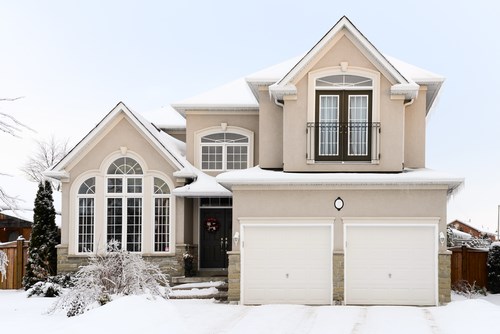
The lifespan of a well-maintained roof should be anywhere from 20-30 years. However, this decreases with roof damage. Roof damage can occur in several ways, but the weather is often the main culprit. A damaged roof can decrease your odds of selling and lead to even more damage in the future. You may think it is your best bet to wait until Spring to get your roof checked out, but holding off can lead to more money coming out of your pocket. Read on to learn four of the ways that Winter can wreak havoc on your roof.
Snow Damage
Different roofs can handle different weight loads. When too much snow and ice accumulate on your roof, your roof could collapse, especially when the snow is wet, because this makes it even heavier. However, even small amounts of snow can cause damage, and if your roof is poorly constructed, you’re at way more risk. You should consistently check for leaks, creaks, or sags throughout the colder months. If you notice any of these problems in your home, you are most likely dealing with a severe problem. The best thing to do is contact a professional as soon as possible before the Winter elements end up inside your home!
The best way to try and prevent these damages is to monitor the amount of snow on your home and remove any that is located around the edges of your roof.
Wind Damage
Severe Storm season isn’t the only time of year when the wind can damage your roof's elements. Winter also has its fair share of strong winds. It is not uncommon for shingles to be broken off, loosened, or torn during wind storms. Flashing can also be ripped off or loosened, and the ridges and rakes of your roof can easily be damaged, considering they are most exposed to wind.
An excellent way to prevent this is to invest in shingles of quality that come with a warranty on wind damage. You can also contact your contractor to inspect your roof before Winter arrives. This can help stop the harm in its tracks.
Ice Buildup
When you turn your heater on during the cold, the warm air rises and heats your shingles. This will cause any snow on your roof to melt and drip down to the cooler edges, where it will freeze as ice. When that ice accumulates and becomes thicker, other snowmelt will situate behind it, causing water to seep under the shingles and potentially cause a leak. As the water freezes and thaws on top of your home, your chances of a leak increase significantly. This is because it works its way into the nooks and crannies of your roof and expands them by freezing.
A good way to stop this is to ensure your attic is insulated and ventilating. Keeping your gutters free of debris from the Fall can also help prevent this.
Attic Condensation
Like mentioned in the previous paragraph, leaving your roof unattended during the Winter can lead to a buildup of ice dams. Not only are ice dams harmful to your roof, but they can lead to an excessive amount of moisture on the ceiling of your attic. This is dangerous because even the smallest condensation build-up can lead to wood rot and mold, which can cause serious health problems.
You can prevent this by maintaining all of your home devices regularly. Moist air enters through the floor of your attic. Moisture build-up can quickly occur if daily devices such as plumbing, dehumidifiers, and appliances are malfunctioning.
How We Can Help
At XL Contracting, roofing is second nature. Your roof is your home’s number one line of defense against the elements, and we can ensure it is ready for the change in weather! To book a FREE roof inspection with us today, visit our website through this link!
Subscribe to XL Contracting's Blog









Comments